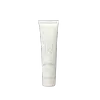What's inside
What's inside
 Key Ingredients
Key Ingredients

 Benefits
Benefits

 Concerns
Concerns

 Ingredients Side-by-side
Ingredients Side-by-side

Water
Skin ConditioningGlycerin
HumectantGlyceryl Acrylate/Acrylic Acid Copolymer
Humectant1,2-Hexanediol
Skin ConditioningSorbitol
HumectantButylene Glycol
HumectantCaffeine
Skin ConditioningCamellia Sinensis Leaf Extract
AntimicrobialPalmitoyl Tripeptide-38
Skin ConditioningHydroxyacetophenone
AntioxidantAsparagopsis Armata Extract
Skin ProtectingHydroxypropyl Cyclodextrin
MaskingAscophyllum Nodosum Extract
Skin ConditioningChrysanthellum Indicum Extract
Skin ConditioningMica
Cosmetic ColorantPhenoxyethanol
PreservativeCI 77891
Cosmetic ColorantWater, Glycerin, Glyceryl Acrylate/Acrylic Acid Copolymer, 1,2-Hexanediol, Sorbitol, Butylene Glycol, Caffeine, Camellia Sinensis Leaf Extract, Palmitoyl Tripeptide-38, Hydroxyacetophenone, Asparagopsis Armata Extract, Hydroxypropyl Cyclodextrin, Ascophyllum Nodosum Extract, Chrysanthellum Indicum Extract, Mica, Phenoxyethanol, CI 77891
Water
Skin ConditioningGlycerin
HumectantSqualane
EmollientCaprylic/Capric Triglyceride
MaskingCoconut Alkanes
EmollientGlyceryl Stearate
EmollientMeadowfoam Estolide
Skin ConditioningPEG-100 Stearate
Cetearyl Alcohol
EmollientC12-15 Alkyl Benzoate
AntimicrobialPhytosteryl Macadamiate
Skin ConditioningTriheptanoin
Skin ConditioningCoco-Caprylate/Caprate
EmollientMethylpropanediol
SolventLinoleic Acid
CleansingPhospholipids
Skin ConditioningPhytosterols
Skin ConditioningSodium Polyacrylate
AbsorbentTribehenin
EmollientCaprylyl Glycol
EmollientPhenoxyethanol
PreservativeDipalmitoyl Hydroxyproline
Skin ConditioningSodium PCA
HumectantUrea
BufferingDilinoleic Acid/Butanediol Copolymer
Hydroxyproline Palmitamide
Skin ConditioningHydroxyethyl Acrylate/Sodium Acryloyldimethyl Taurate Copolymer
Emulsion StabilisingIsohexadecane
EmollientCeramide Ng
Skin ConditioningTrehalose
HumectantSodium Phytate
PEG-10 Phytosterol
EmulsifyingHexylene Glycol
EmulsifyingPolysorbate 60
EmulsifyingPalmitic Acid
EmollientLactic Acid
BufferingPolyquaternium-51
Skin ConditioningTocopherol
AntioxidantTriacetin
AntimicrobialCastor Oil/Ipdi Copolymer
Sorbitan Isostearate
EmulsifyingSodium Hyaluronate
HumectantPalmitoyl Hexapeptide-12
Skin ConditioningWater, Glycerin, Squalane, Caprylic/Capric Triglyceride, Coconut Alkanes, Glyceryl Stearate, Meadowfoam Estolide, PEG-100 Stearate, Cetearyl Alcohol, C12-15 Alkyl Benzoate, Phytosteryl Macadamiate, Triheptanoin, Coco-Caprylate/Caprate, Methylpropanediol, Linoleic Acid, Phospholipids, Phytosterols, Sodium Polyacrylate, Tribehenin, Caprylyl Glycol, Phenoxyethanol, Dipalmitoyl Hydroxyproline, Sodium PCA, Urea, Dilinoleic Acid/Butanediol Copolymer, Hydroxyproline Palmitamide, Hydroxyethyl Acrylate/Sodium Acryloyldimethyl Taurate Copolymer, Isohexadecane, Ceramide Ng, Trehalose, Sodium Phytate, PEG-10 Phytosterol, Hexylene Glycol, Polysorbate 60, Palmitic Acid, Lactic Acid, Polyquaternium-51, Tocopherol, Triacetin, Castor Oil/Ipdi Copolymer, Sorbitan Isostearate, Sodium Hyaluronate, Palmitoyl Hexapeptide-12
 Reviews
Reviews

Ingredients Explained
These ingredients are found in both products.
Ingredients higher up in an ingredient list are typically present in a larger amount.
Glycerin is already naturally found in your skin. It helps moisturize and protect your skin.
A study from 2016 found glycerin to be more effective as a humectant than AHAs and hyaluronic acid.
As a humectant, it helps the skin stay hydrated by pulling moisture to your skin. The low molecular weight of glycerin allows it to pull moisture into the deeper layers of your skin.
Hydrated skin improves your skin barrier; Your skin barrier helps protect against irritants and bacteria.
Glycerin has also been found to have antimicrobial and antiviral properties. Due to these properties, glycerin is often used in wound and burn treatments.
In cosmetics, glycerin is usually derived from plants such as soybean or palm. However, it can also be sourced from animals, such as tallow or animal fat.
This ingredient is organic, colorless, odorless, and non-toxic.
Glycerin is the name for this ingredient in American English. British English uses Glycerol/Glycerine.
Learn more about GlycerinPhenoxyethanol is a preservative that has germicide, antimicrobial, and aromatic properties. Studies show that phenoxyethanol can prevent microbial growth. By itself, it has a scent that is similar to that of a rose.
It's often used in formulations along with Caprylyl Glycol to preserve the shelf life of products.
Water. It's the most common cosmetic ingredient of all. You'll usually see it at the top of ingredient lists, meaning that it makes up the largest part of the product.
So why is it so popular? Water most often acts as a solvent - this means that it helps dissolve other ingredients into the formulation.
You'll also recognize water as that liquid we all need to stay alive. If you see this, drink a glass of water. Stay hydrated!
Learn more about Water